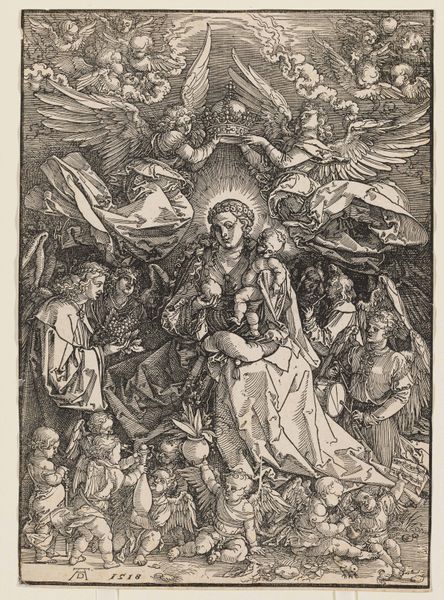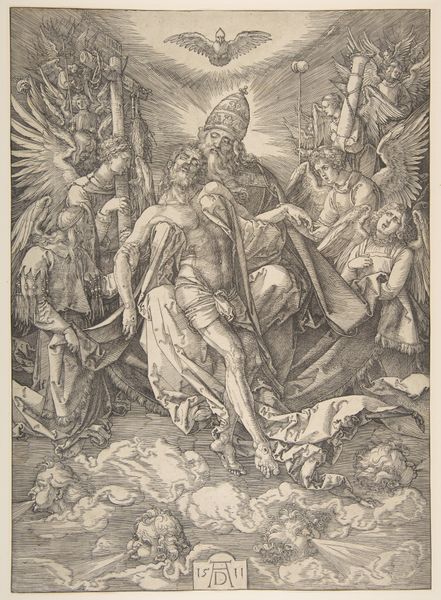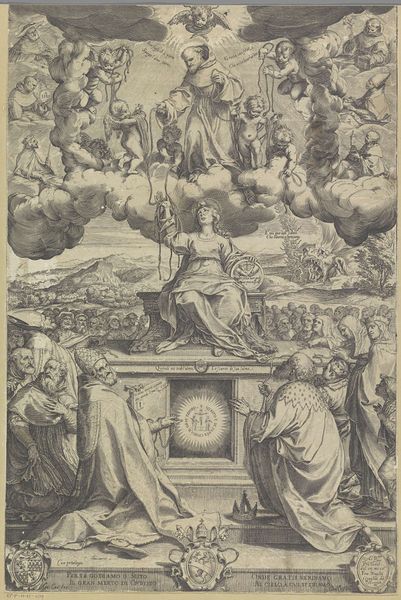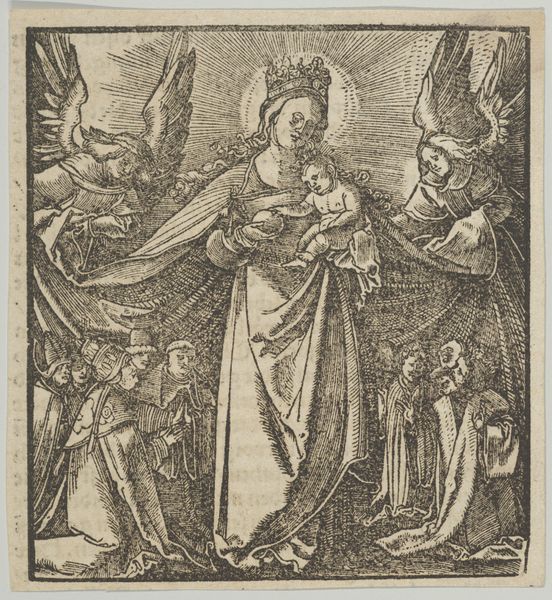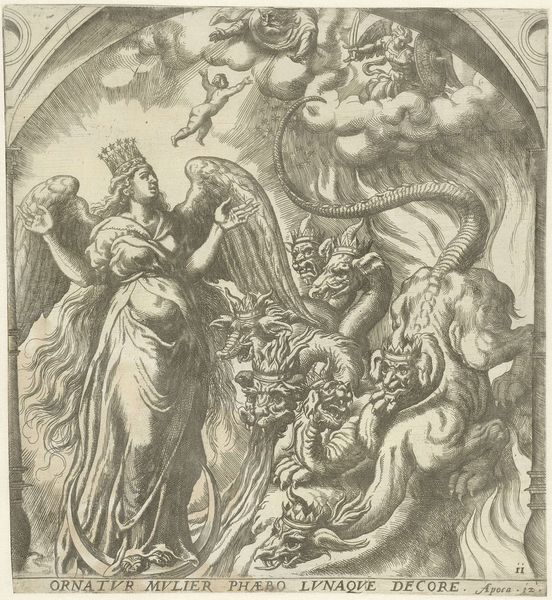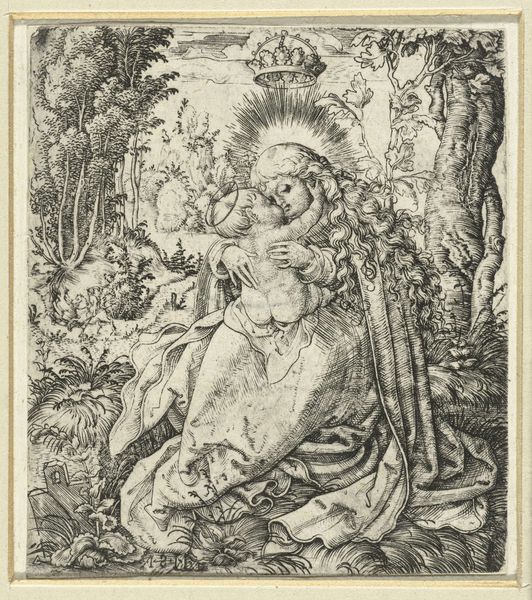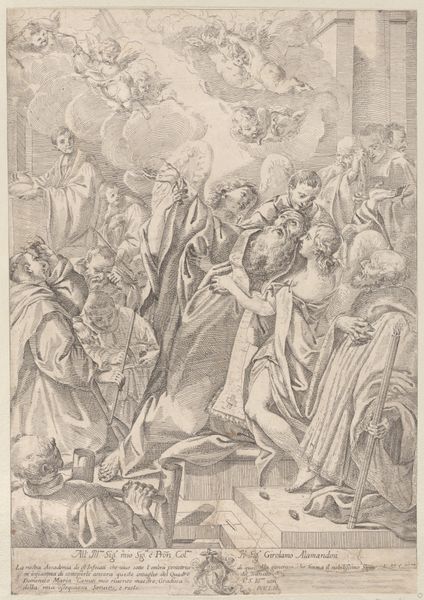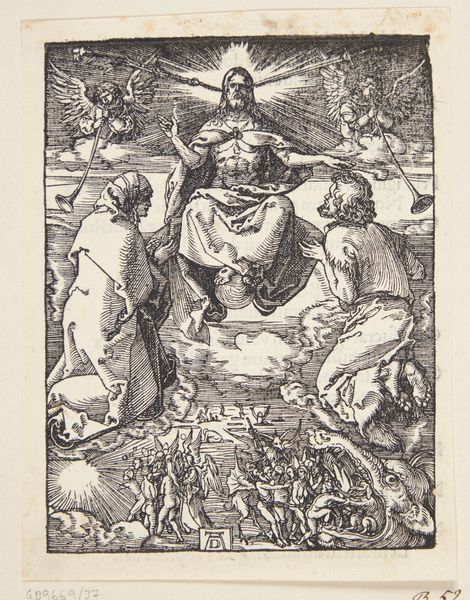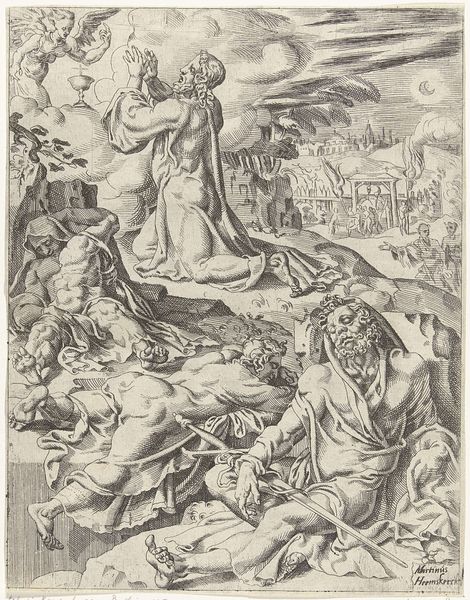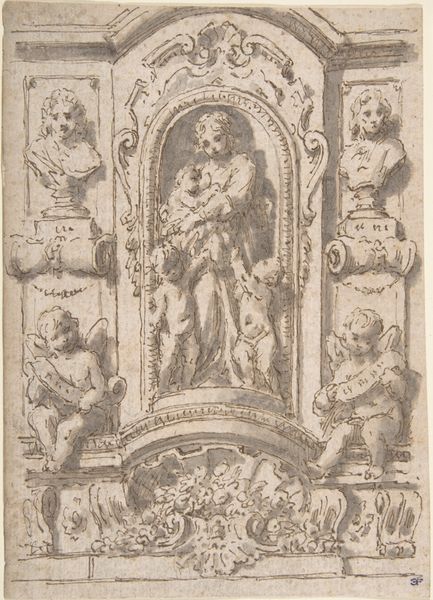
drawing, print, engraving
#
drawing
# print
#
figuration
#
11_renaissance
#
history-painting
#
northern-renaissance
#
engraving
Dimensions: For the whole series: plate circa : 5 x 3 13/16 in. (12.7 x 9.7 cm)
Copyright: Public Domain
Editor: We're looking at "Engraved copies of The Little Passion," a print made sometime between 1485 and 1700, attributed to Albrecht Durer and held at the Met. The detail achieved in the engraving is striking, especially considering its scale. The tonal range is limited by the printmaking process but contributes to the artwork's visual structure. How do you read the organization and symbology of the overall composition? Curator: Indeed. Observe the hierarchical arrangement: The divine figures, bathed in light, occupy the upper register, sharply contrasting the tumultuous scenes unfolding below. Note the balanced positioning of the two kneeling figures—presumably representing supplication—flanking Christ. The converging lines draw the eye towards the central figure. What of the light? Does it strike you as naturally rendered? Editor: Not exactly. The rays seem more symbolic, highlighting the divine figures in contrast to the darker underworld below. Are there any other structural oppositions? Curator: Absolutely. Consider the contrasting textures: the smooth, idealized forms of the angels juxtaposed with the grotesque, almost caricatured depiction of the damned. The figures below—are they an active mass? How are they distinct from those figures above? Editor: I see—there’s less dynamic posing; the figures look crowded and confined by the sinuous forms surrounding them. There is a definite separation in space and affect! The structural division underscores a symbolic chasm. Curator: Precisely. Durer's masterful use of line and form communicates a clear moral and spiritual hierarchy. Studying the use of these oppositional arrangements demonstrates an allegorical journey for the viewer’s reading. Editor: Looking at it formally like this sheds a new light on how the artist made the images function as part of a cohesive artistic program! Curator: A cohesive artistic program that serves both a didactic and aesthetic function. A worthy model to follow!
Comments
No comments
Be the first to comment and join the conversation on the ultimate creative platform.


